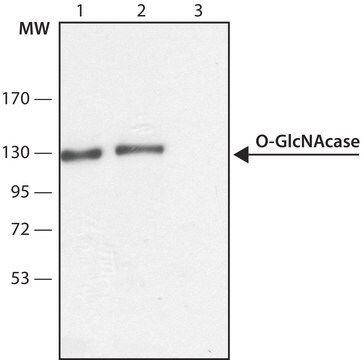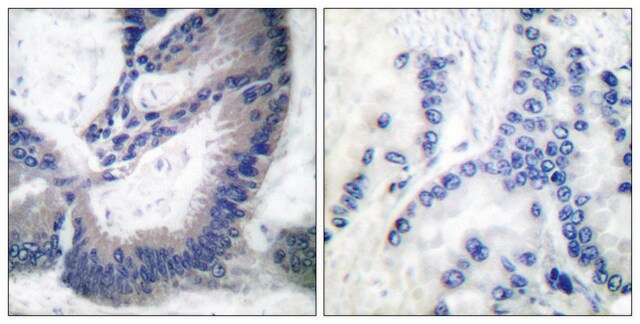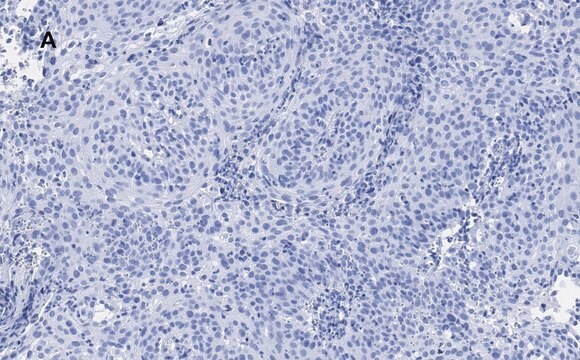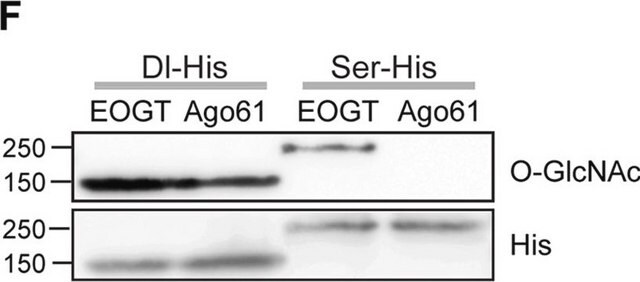General description
We are committed to bringing you greener alternative products, which adhere to one or more of The 12 Principles of Green Chemistry. This antibody is Preservative-free, produced without the harm or sacrifice of animals and exceptionally stable to allow for ambient shipping and storage if needed and thus aligns with "Waste Prevention", "Designing Safer Chemicals" and "Design for Energy Efficiency".
Click here for more information.
ZooMAb® antibodies represent an entirely new generation of recombinant monoclonal antibodies. Each ZooMAb® antibody is manufactured using our proprietary recombinant expression system, purified to homogeneity, and precisely dispensed to produce robust and highly reproducible lot-to-lot consistency. Only top-performing clones are released for use by researchers. Each antibody is validated for high specificity and affinity across multiple applications, including its most commonly used application. ZooMAb® antibodies are reliably available and ready to ship when you need them.
Specificity
Clone 1B3 is a ZooMAb® rabbit recombinant monoclonal antibody that specifically detects O-GlcNAcase (OGA/MGEA5). It targets an epitope within 24 amino acids from the internal region.
Immunogen
KLH-conjugated linear peptide corresponding to 24 amino acids from the internal region of human O-GlcNAcase.
Application
Quality Control Testing
Evaluated by Western Blotting in NIH3T3 cell lysate.
Western Blotting Analysis: A 1:1,000 dilution of this antibody detected MGEA5/OGA in NIH3T3 cell lysate.
Tested Applications
Western Blotting Analysis: A 1:1,000 dilution from a representative lot detected MGEA5/OGA in HeLa and HepG2 cell lysates.
Immunohistochemistry (Paraffin) Analysis: A 1:1,000 dilution from a representative lot detected MGEA5/OGA in Human testis tissue sections.
Affinity Binding Assay: A representative lot of this antibody bound MGEA5/OGA peptide with a KD of 9.9 x 10-6 in an affinity binding assay.
Note: Actual optimal working dilutions must be determined by end user as specimens, and experimental conditions may vary with the end user.
Target description
Protein O-GlcNAcase (UniProt: O60502; also known as EC:3.2.1.169, OGA, Beta-N-acetylglucosaminidase, Beta-N-acetylhexosaminidase, Beta-hexosaminidase, Meningioma-expressed antigen 5, N-acetyl-beta-D-glucosaminidase, N-acetyl-beta-glucosaminidase, Nuclear cytoplasmic O-GlcNAcase and acetyltransferase, NCOAT) is encoded by the OGA (also known as HEXC, KIAA0679 MEA5, MGEA5) gene (Gene ID: 10724) in human. O-GlcNAcylation is an important posttranslational modification found on serine and threonine residues that is brought about by O-GlcNAc transferase (OGT) and O-GlcNAcase (OGA). They mediate the dynamic cycling of O-GlcNAcylation on a wide variety of cytosolic, nuclear, and mitochondrial proteins. In this cycling, OGT catalyzes the addition of O-GlcNAc to proteins and OGA catalyzes the removal of this modification. Disruption in the activity of OGT and OGA has been implicated in multiple disease states. Deletion of genes for these enzymes causes early postnatal lethality. OGA is an evolutionarily conserved, monomeric enzyme that is ubiquitously distributed. Its highest expression is observed in the brain, placenta, and pancreas. Four isoforms of OGA have been described that are produced by alternative splicing. Isoform 1 (long isoform) is reported to cleave GlcNAc but nor GalNAc from O-glycosylated proteins. Its activity is inhibited by N-acetylglucosamine and not N-acetylgalactosamine. The long isoform of OGA resides mainly within the cytosol, whereas the short isoform localizes in the nucleus and lipid droplets, and it has lower enzymatic activity. This ZooMAb® recombinant monoclonal antibody, generated by our propriety technology, offers significantly enhanced specificity, affinity, reproducibility, and stability over conventional monoclonals. (Ref.: Ong, Q., et al. (2018). Front. Endocrinol. 9; 599; Bond, MR., and Hanover, JA. (2013). Annu. Rev. Nutr. 33; 205-29; Yang, YR., et al. (2012). Aging Cell. 11(3); 439-448; Gao, Y., et al. (2001). J. Biol. Chem. 276(13); 9838-9845).
Physical form
Purified recombinant rabbit monoclonal antibody IgG, lyophilized in PBS, 5% Trehalose, normal appearance a coarse or translucent resin. The PBS/trehalose components in the ZooMAb formulation can have the appearance of a semi-solid (bead like gel) after lyophilization. This is a normal phenomenon. Please follow the recommended reconstitution procedure in the data sheet to dissolve the semi-solid, bead-like, gel-appearing material. The resulting antibody solution is completely stable and functional as proven by full functional testing. Contains no biocide or preservatives, such as azide, or any animal by-products. Larger pack sizes provided as multiples of 25 µL.
Reconstitution
300 µg/mL after reconstitution at 25 µL per vial. Please refer to guidance on suggested starting dilutions and/or titers per application and sample type.
Storage and Stability
Recommend storage of lyophilized product at 2-8°C; Before reconstitution, micro-centrifuge vials briefly to spin down material to bottom of the vial; Reconstitute each vial by adding 25 µL of filtered lab grade water or PBS; Reconstituted antibodies can be stored at 2-8°C, or -20°C for long term storage. Avoid repeated freeze-thaws.
Other Notes
Concentration: Please refer to the Certificate of Analysis for the lot-specific concentration.
Legal Information
ZooMAb is a registered trademark of Merck KGaA, Darmstadt, Germany
Disclaimer
Unless otherwise stated in our catalog or other company documentation accompanying the product(s), our products are intended for research use only and are not to be used for any other purpose, which includes but is not limited to, unauthorized commercial uses, in vitro diagnostic uses, ex vivo or in vivo therapeutic uses or any type of consumption or application to humans or animals.










